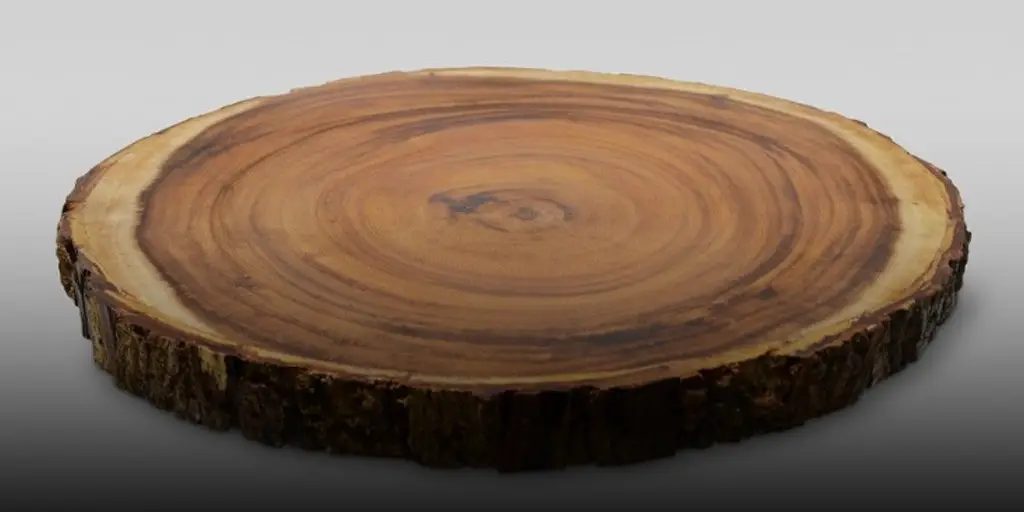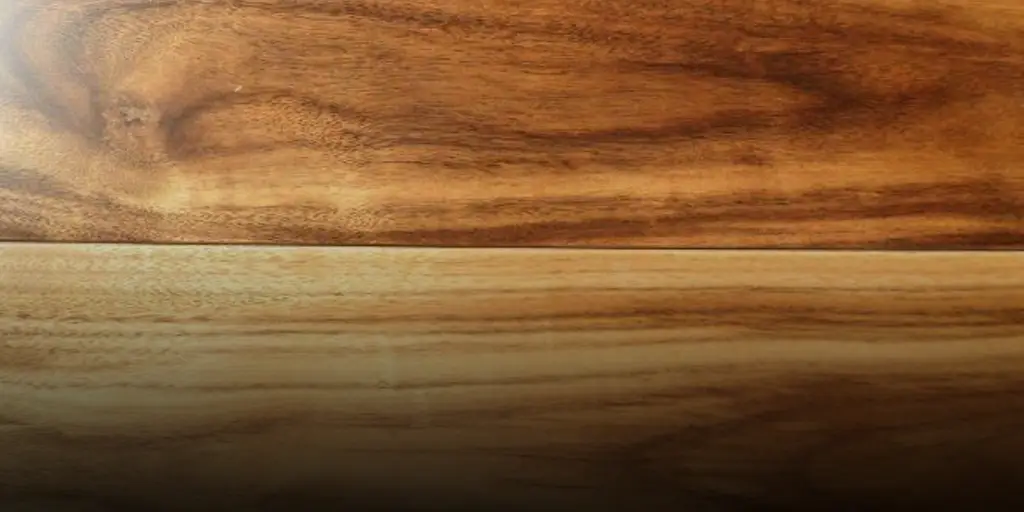Acacia wood has garnered popularity for its robustness and aesthetic appeal in furniture making and decorative items.
Often hailed for its durability and natural beauty, this wood type has become a preferred choice for many craftsmen and homeowners.

However, like all materials, Acacia wood comes with its own set of challenges that might not be immediately apparent.
This guide aims to shed light on these lesser-known disadvantages, providing a balanced perspective for those considering Acacia for their projects.
Temperature Sensitivity and Its Implications
The Problem: Despite its reputation as a hardy material, Acacia wood is surprisingly sensitive to temperature fluctuations. This susceptibility can lead to significant issues in certain environments.
- Cracking in Heat: High temperatures can damage Acacia’s fibers, leading to cracks. This is particularly problematic in regions with extreme day-to-night temperature variations.
- Swelling in Humidity: In damp conditions, Acacia wood tends to swell, making it unsuitable for outdoor use without proper treatment.
Practical Solutions: To mitigate these issues, it’s advisable to:
- Rotate outdoor furniture to minimize prolonged exposure.
- Avoid placing Acacia wood near heat sources like fireplaces or in direct sunlight.
The Demand for High Maintenance

Maintenance Needs: Acacia wood requires more upkeep than some other wood types. Regular cleaning and specific care are essential to maintain its appearance and integrity.
- Cleaning: Use a slightly moist cloth with mild soapy water, avoiding harsh chemicals.
- Oiling: Periodic oiling with specific preservatives is necessary to prevent warping and maintain its natural luster.
Maintenance Challenges: This level of maintenance might be too demanding for some, making Acacia a less desirable option for those looking for low-maintenance materials.
Complex Grain Structure: Aesthetic vs. Practicality
Irregular Patterns: Acacia’s grain structure is unpredictable, featuring a mix of straight and wavy patterns with numerous knots. While this can add to its beauty, it poses challenges:
- Workability: The irregular grain can make it difficult to achieve a uniform look, complicating woodworking projects.
- Aesthetic Integration: Its distinct appearance might not blend seamlessly into every décor style, limiting its versatility.
Considerations: When selecting Acacia, consider the impact of its unique grain on both the aesthetics and the practical aspects of your project.
The Hard Truth: Workability Concerns

Hardness as a Double-Edged Sword:
- Janka Rating: Acacia’s impressive hardness, rated at 2,300 on the Janka scale, surpasses many common woods like hickory and oak. While this speaks to its durability, it presents challenges in workability.
- Tool Requirements: The extreme hardness necessitates the use of power tools for cutting and shaping, as hand tools might not suffice.
Weight Considerations:
- Heaviness: Acacia’s density also contributes to its weight, making it cumbersome to handle during various woodworking processes like sawing and joining.
Import Factor:
- Origin and Availability: Primarily imported, Acacia is not native to North America, adding to its cost and sometimes affecting its availability.
Price Point: Quality at a Cost
Cost Comparison:
- Relative Expense: Acacia wood is generally more expensive than many American hardwoods. For example, the cost per foot for Australian Blackwood Acacia can range significantly higher than that for oak or maple.
Value Assessment:
- Balancing Factors: While Acacia may be a pricier option, its durability and unique aesthetic can justify the investment for certain projects.
- Alternative Options: Sometimes, more affordable and locally available woods like oak might be a more practical choice, depending on the project’s requirements.
Cracking Under Pressure: Durability Issues
Dryness and Cracking:
- Environmental Impact: Acacia wood’s tendency to crack under dry conditions or abrupt environmental changes can compromise its structural integrity.
- Preventive Care: Regular moisturizing and keeping the wood away from extreme dryness and direct heat can help mitigate this issue.
Pest Susceptibility: A Hidden Risk
Attracting Unwanted Guests:
- Vulnerability to Pests: Termites and beetles can be attracted to Acacia wood, posing a risk of infestation.
Proactive Measures:
- Regular Inspection: It’s crucial to inspect Acacia wood regularly for signs of pests.
- Preventive Treatment: Applying appropriate treatments or consulting professionals can help protect the wood from pests.
Limited Color Palette: Creativity Constraints
Natural Hues:
- Color Range: Acacia wood predominantly comes in shades of light to medium brown, which might not suit all tastes or design schemes.
Customization Options:
- Staining and Painting: While Acacia’s natural color has its charm, staining or painting can be considered for a more diverse color palette.
People Who Want to Read This Article:
Outdoor Use Limitations: Protection is Key
Outdoor Challenges:
- Weather Sensitivity: Acacia wood requires additional protection when used outdoors, as prolonged exposure to elements like sunlight and moisture can cause damage.
Protective Measures:
- Treatment with Sealants: Using water-resistant sealants and finishes is essential for outdoor Acacia furniture.
- Regular Maintenance: These treatments need to be maintained and reapplied periodically to ensure long-lasting protection.
Conclusion
Acacia wood, with its robustness and unique beauty, offers numerous benefits for a variety of applications.
However, the challenges highlighted in this guide, including sensitivity to temperature changes, high maintenance requirements, and limited color options, among others, should be carefully considered.
Understanding these aspects ensures that you are well-informed and prepared to make the most out of Acacia wood in your projects, striking the right balance between aesthetic appeal and practicality.



